March 15, 2020
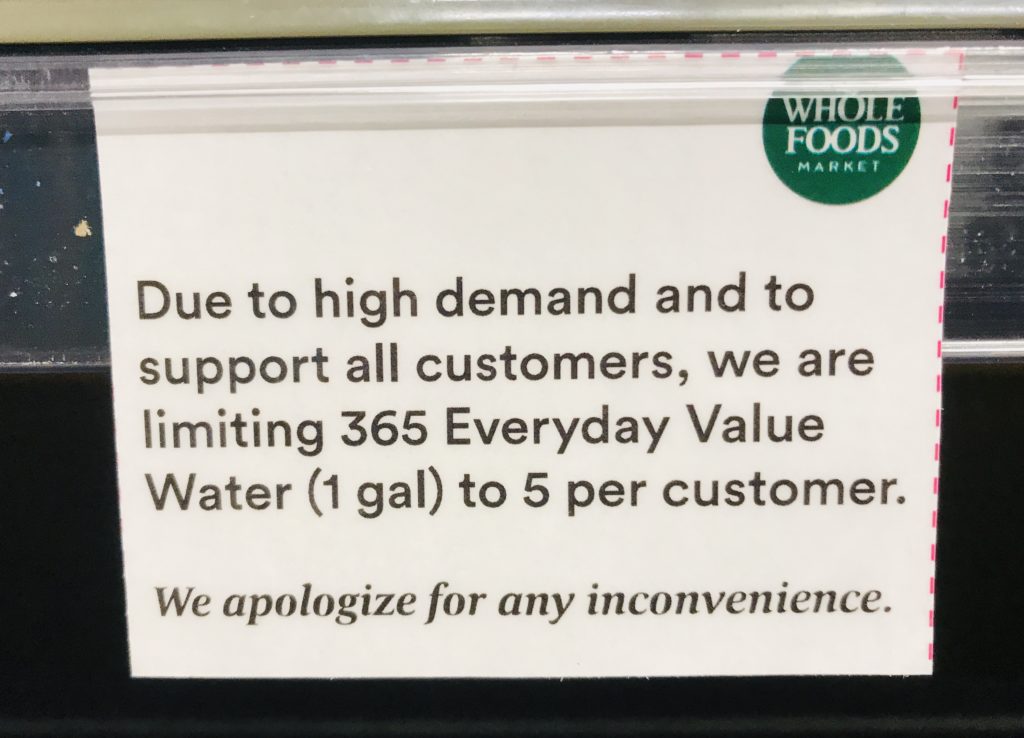
written by Net Advisor™
LOS ANGELES, California. It appears much of the U.S. media has been running near 24-7 coverage, obsessing over an illness that thus far, has affected very few people compared to the flu and compared to historical viruses.
The media-induced panic over Covid-19 or the “CoronaVirus” has massively changed the behaviors of many consumers, business, public facilities, state, local and federal government.
The result of consumer behavior has led to panic buying of dried, frozen, and other foods, bottled water, sanitizer, toilet-paper and more.
In our last report, our staff visited a Costco, and a Walmart located in lower social-economic areas. Our staff found especially water and toilet paper scarce to unavailable.
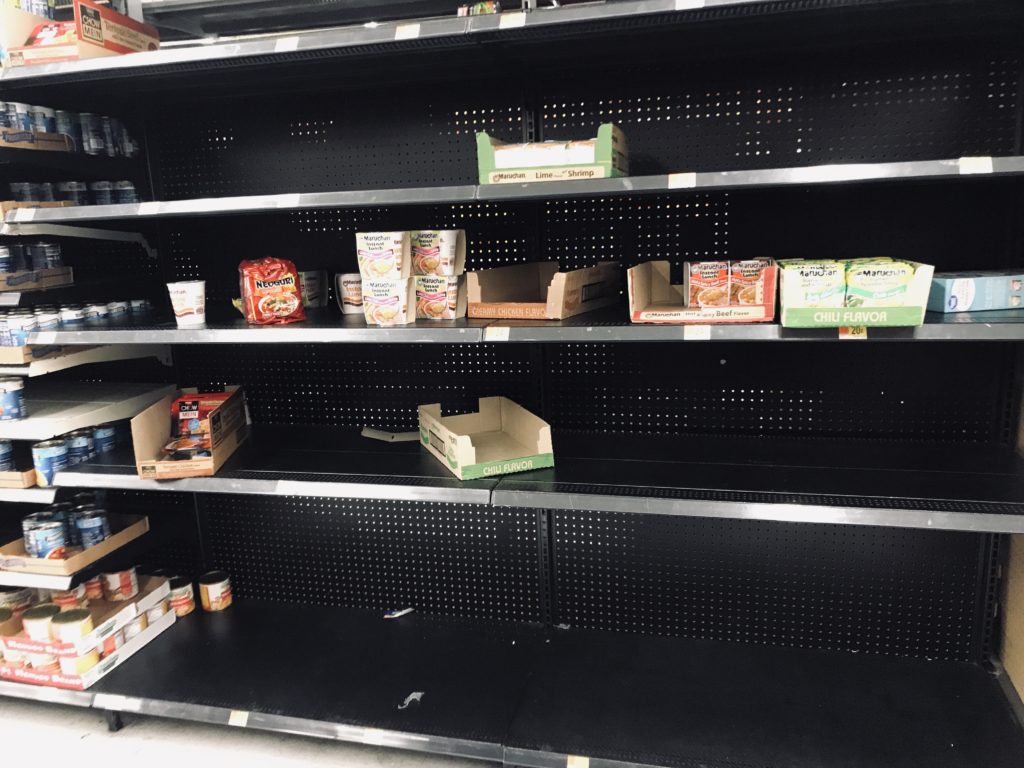
On Friday, March 13, 2020, at a supermarket in a middle-class community owned by Kroger. Our staff found most all dairy milk (including almond milk) gone from the refrigerators. The only milk products remained were organic chocolate milk and Horizon top of the line high-end organic “no fat” milk, but those too were scarce. Sorry, our staff didn’t take photos here, but they did at their next stop.
It’s interesting that people would panic buy refrigerated dairy milk, since typically it has a shelf-life up to just a month.
Our staff then checked out a random Wholefoods, and a separate Los Angeles-based local supermarket located in a more socioeconomic-affluent area. We wanted to see if there were any distinctions of economic groups that were more likely to be “prepping” for some disaster.
Our Prepper Findings.
Our findings based on random sample of five different stores from low to socioeconomic to high socioeconomic areas suggested to us the following:
– All economic groups seemed to be prepping with at least basic food products, water, and personal hygiene.
– The high socioeconomic Wholefoods store had more sections of food cleared or near empty shelves than did our observation in the lower socioeconomic stores such as Walmart, Target, and a middle-socioeconomic Costco store.
For statistical purposes, this sample only covers a major metropolitan area of California and not the state or country. But TV and print media, including social media reports across the country have found similar stores’ shelves low to empty.
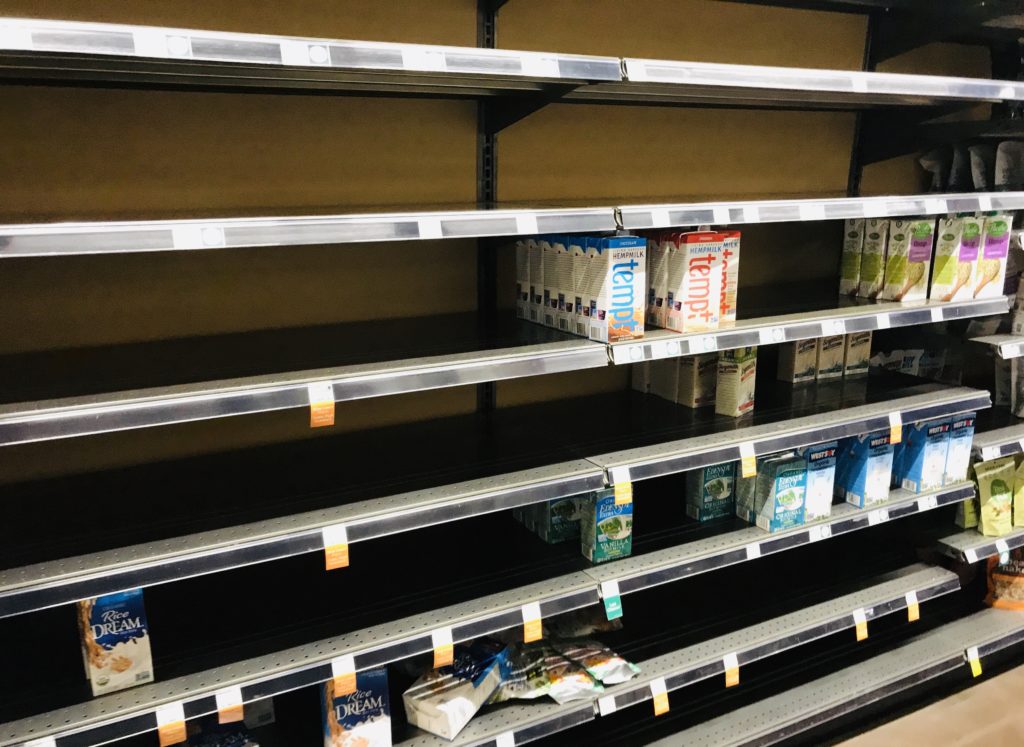
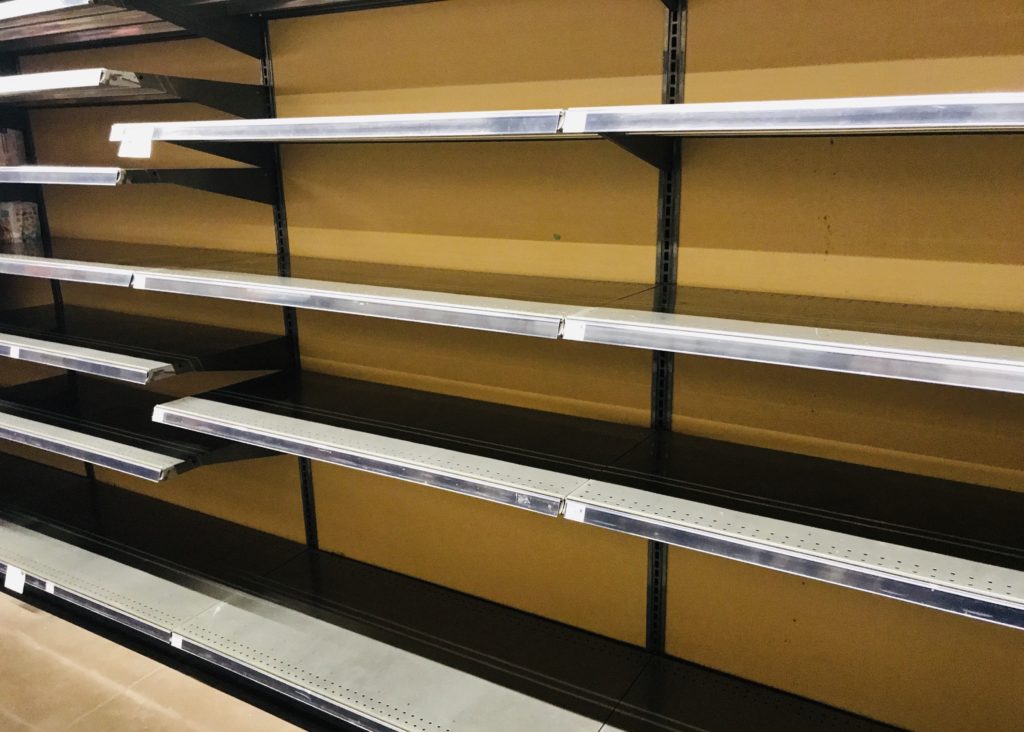
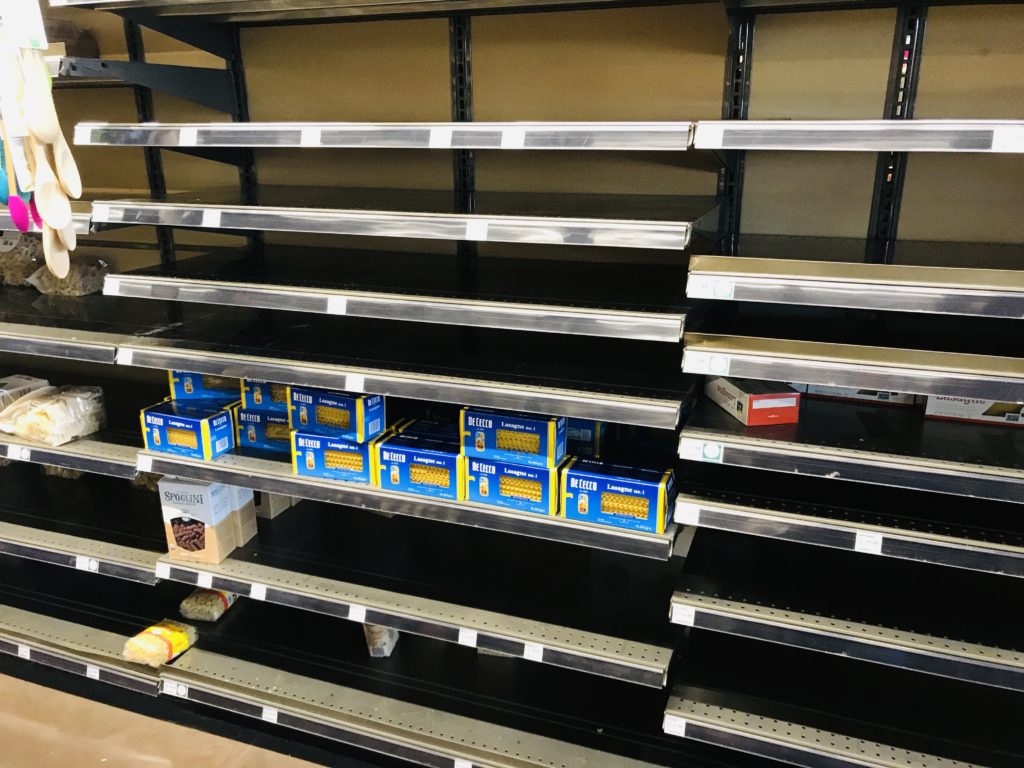
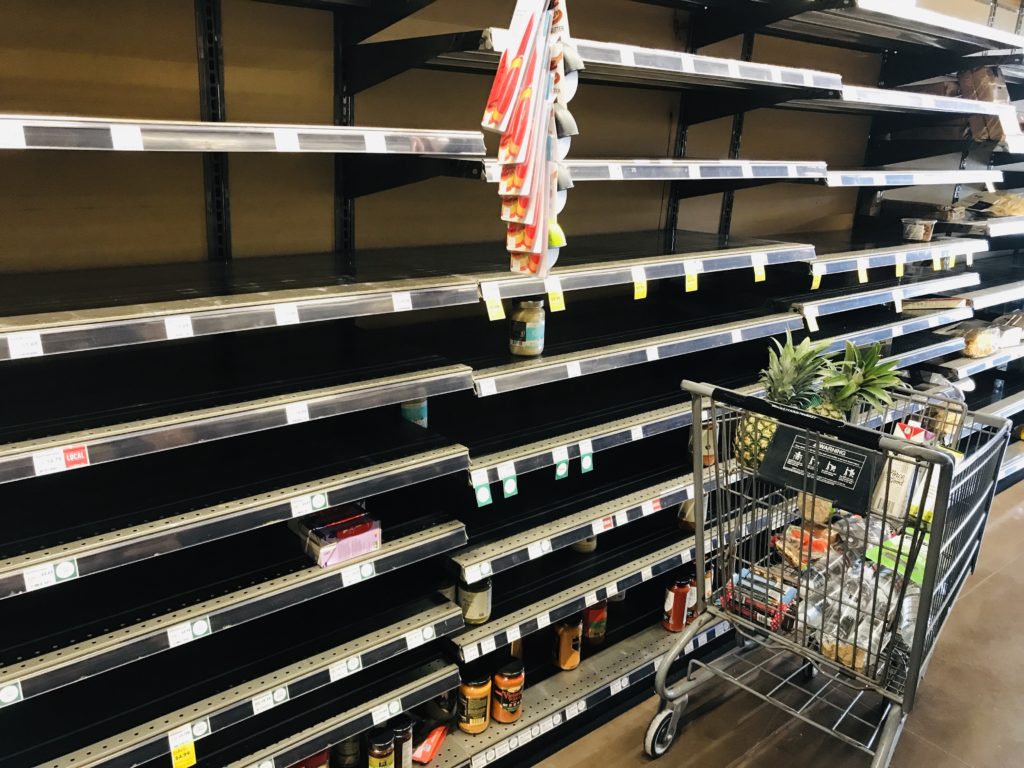

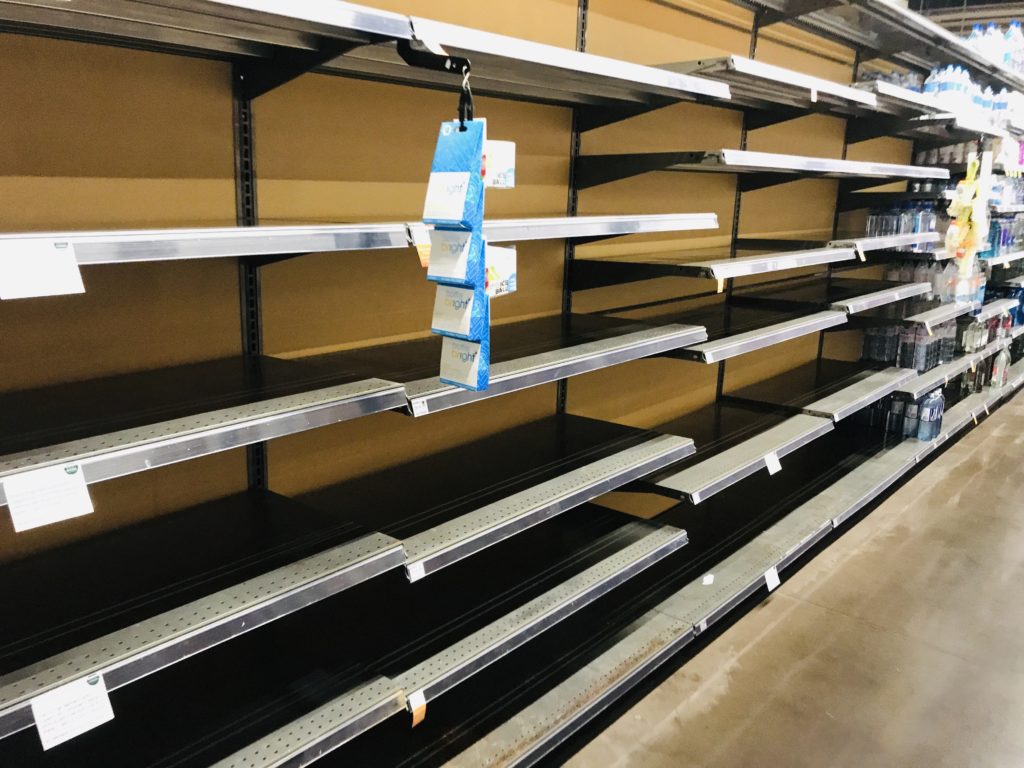
Food, TP & Water – Not the Only Things in High Demand.
According to media reports, ammunition sales have seen a sharp increase since late February 2020. According to Ammo.com, the largest demand is the Smith & Wesson .40 caliber (handgun) ammunition, up a whopping 410%; followed by .223 (+194%) and 7.62MM (+114%) rifle rounds commonly used in AR-15‘s.
Southern States have seen greatest demand for ammunition, such as North Carolina (+179%), and Georgia (+169%). Even the liberal, Anti-gun states such as Illinois and New York have seen recent ammo sales up 67% and 48% respectively.
Walmart began limiting ammunition purchases to three boxes per day according to CNN.
Closing up the Country Panic?
It seems that anywhere where there will be people in high numbers have temporarily closed events.
An increasing number of K-12 schools to universities, sporting and entertainment events now subject to temporarily closures mostly from the fear of Covid-19, and not by any actual cases. Not a single case of Covid-19 was reported in Universal Studios, Disneyland, Disney World, their hotels, or their cruise lines, yet the theme-parks are closed through the end of March as a precautionary measure.
The former San Francisco mayor, now California governor, Gavin Newsom (D) issued an executive order where the State may seize privately owned hotels and medical facilities and use them for Ciovid-19 treatment centers. The order also bans public gathering of more than 250 people in a state with a population of nearly 40 million people.
Stocks Rebound After Being Under Pressure Over Covid-19 Fears.
U.S. and global stock markets have tanked especially over the last couple weeks in fear that if consumers are not spending (except for basic necessities) such could impact corporate earnings.
On March 13, 2020, U.S. President Donald J. Trump declared a National Emergency to further address the Covid-19 concerns and to assist the public.
The move waves student loan interest costs ‘until further notice,’ releases up to $50 Billion in federal aid to states, business, persons, and government agencies. The President also hired Google to develop a website to address questions and answers of who should be tested for Covid-19.
The last time the U.S. government tried to create a major website on their own was for Obamacare, which cost U.S. taxpayers over $2 Billion to develop; was not initially secured; and was seen as a “train wreck” by a Democrat senator. In 2009, it was found that the U.S. government was wasting over $800 Billion a year on healthcare.
U.S. stocks experienced a relief rally on Friday, March 13th soaring 1,985 points to a record 1-day point gain and tied for the top 10 biggest 1-day percent gain (9.36%) in U.S. history.
FED Slashes Rates to Near Zero Percent.
On a rare Sunday (March 15, 2020) move, the Federal Reserve Bank cut the Fed Funds Rate to near zero percent. This on top of a half-point rate cut on March 3rd.
This will be a huge benefit for anyone with debt, loans, including paying mortgage interest. To take advantage of record low interest rates, one needs to talk to a lender about refinancing preferably to a fix interest rate. The move will help consumers, small to large business finance or refinance debt to more manageable levels during any risk of brief economic slowdown.
We see the U.S. (and foreign) stock markets continue their volatility in the near future until more known events showing stronger stability over Covid-19 fears. Our view in stock market management, is in part to ride out volatility using dollar cost averaging.
In the meantime, it appears the media will continue to try and instill fear and panic in the public.
Images may be copyright by their respective owners.
Original article content, Copyright © 2020 NetAdvisor.org® All Rights Reserved.
NetAdvisor.org® is a non-profit organization providing public education and analysis primarily on the U.S. financial markets, personal finance and analysis with a transparent look into U.S. public policy. We also perform and report on financial investigations to help protect the public interest. Read More.

